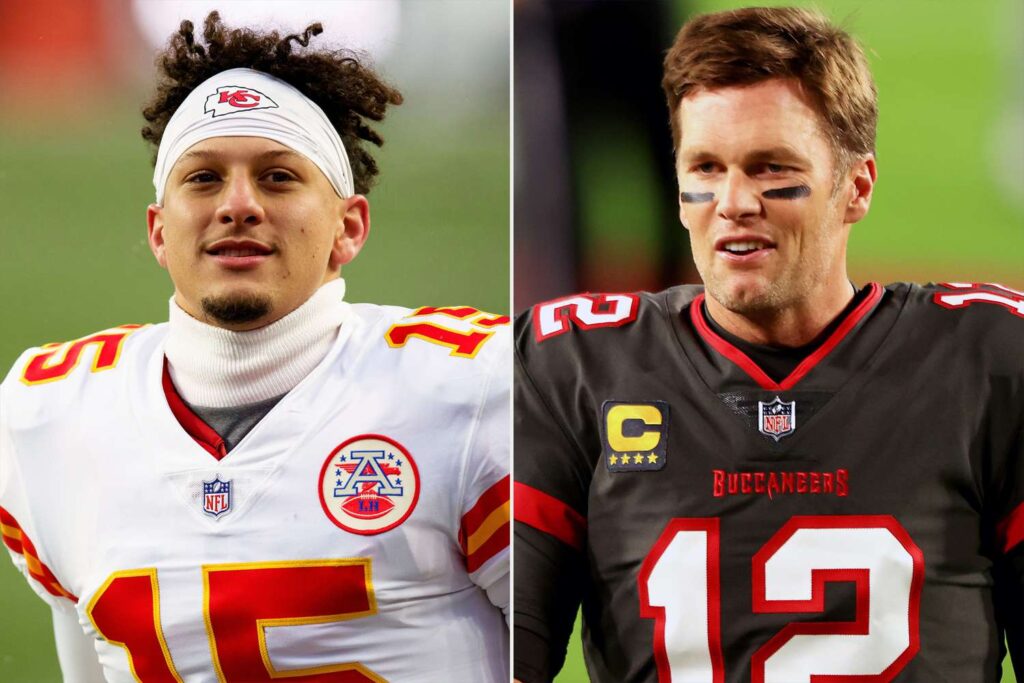The goal here is to assess proper credit for how a quarterback is impacting winning on his team. This is done by finding out how many games the team would have won with an average quarterback and then seeing whether the quarterback specifically analyzed won as much, more, or even less than what the average quarterback would have done in those games based on how many points the defense allowed in each game for a regular season or postseason runs. The aforementioned articles for judging a quarterback in the regular season and postseason explain all of this in better depth.
The concept of taking such an approach originated from a Bleacher Report article years ago. The Bleacher Report article referenced a Pro-Football Reference article that not only was the source of the original calculations, but also had the average quarterback’s win probability based on the points the defense gives up. The numbers are below.
A quarterback should win 93.5% of games when the defense allows 0-10 points.
A quarterback should win 76.1% of games when the defense allows 11-15 points.
A quarterback should win 52.6% of games when the defense allows 16-20 points.
A quarterback should win 38.8% of games when the defense allows 21-25 points.
A quarterback should win 17.7% of games when the defense allows 26-33 points.
A quarterback should win 3.6% of games when the defense allows 34+ points.
The way to calculate a quarterback’s level of credit for his contributions to his team’s wins is by obtaining his record differential. The record differential is the difference between the number of games an average quarterback would have won in his starts with a specific team compared to how many a specific quarterback won in those same games. A way to calculate this for a season or collection of postseason games is to categorize each game into the defensive points allowed scoring brackets like above. Afterwards, one has to multiply the number of games in each point allowed bracket by each percentage representing the likelihood of the average quarterback winning. After this, the product of these respective calculations is subtracted from the number of games in each points allowed bracket. The product of percentages and total of games for each point allowed bracket is added to present the specific number of wins an average quarterback would have won in that selection of games.
The difference between the total games for each point allowed bracket and the aforementioned product (total games for each point allowed bracket multiplied by percentages) is added up to represent the amount of losses an average quarterback would have gotten. The amount of wins a specific quarterback actually started in those games is subtracted by the calculated amount of wins an average quarterback would have won in those. The answer is the record differential. The higher the record differential, the more value the quarterback added in wins above average.
This method is not perfect since it doesn’t take in the full context of a game such as a quarterback losing his start because of factors outside of him such as a missed game winning field goal or injuries to teammates. Also, the amount of points a defense gives up can be skewed if the offense has a turnover that leads to a touchdown. Also, a quarterback could theoretically struggle in a game but get credit in a win if he is at least clutch, while another quarterback might look efficient at times but lose a game if he isn’t clutch. A quarterback may lose a shootout because a defense gave up a late score but could win a low scoring game because the defense played well. However, this method holds up over a long stretch of time and with a bigger sample size because it increases the likelihood of the quarterback playing under different circumstances such as having variations in teammates’ health, their own health, different personnel, changes in the game, different forms of team building such as offensively or defensively driven teams, and more.
Doing this will give a better sense at what kind of impact a quarterback gives to a team even when accounting for the level of offensive help he may have that could cause fluctuations in his record differential over the years. All seasons in a quarterback’s career are accounted for even if it is a season in which he was out with injury, didn’t start yet, or was a backup because it factors into the value he is giving or not giving to his team. Also, the more games a quarterback plays, the different types of situations they will get to play in, even if there are variations often to how often such situations can occur for each quarterback. This means they will get to be on both ends of different types of games such as being on a team that lost or won because of a missed field goal attempt.
This list shows the total value record differential the contemporary quarterbacks of the 21st century. The total value record differential is found by taking all the regular season record differentials of a player and then adding it up before dividing by the number of years they were in the league. The answer is the career record differential. It is added with the total postseason record differential of that same player and then divided by 2 to obtain the total value record differential.
The differentials are divided into two because the postseason has to be weighted very heavily due to its importance and the fact that it has the best level of competition, which can better showcase how impactful that specific quarterback is. In the playoffs, the advantages some quarterbacks may have over others in terms of scheme and offensive help is neutralized since they are playing good playoff teams that can better match them talent for talent or has had to properly game plan a quarterback’s teammates and game plan against the quarterback’s strengths and flaws. The chart below shows the career regular season record, postseason record differential (minimum of four starts), and the total value record differential for quarterbacks that played many seasons as primary starters in the 21st century.
| Name | Team(s) | Career Regular Season +/- | Career Postseason +/- | Total Value +/- |
| Tom Brady | NE, TB | 3.35 | 13.02 | 8.19 |
| Patrick Mahomes | KC | 4.36 | 8.74 | 6.55 |
| Ben Roethlisberger | PIT | 1.96 | 4.45 | 3.20 |
| Drew Brees | SD, NO | 2.81 | 3.02 | 2.92 |
| Aaron Rodgers | GB, NYJ | 2.24 | 3.40 | 2.82 |
| Peyton Manning | IND, DEN | 3.65 | 1.61 | 2.63 |
| Kurt Warner | STL, NYG, ARZ | 0.87 1.15 (excluding pre-nfl years from 1994-1998) | 4.10 | 2.48 2.63 (excluding pre-nfl years from 1994-1998) |
| Jalen Hurts | PHI | 3.22 | 1.65 | 2.44 |
| Josh Allen | BUF | 2.40 | 2.33 | 2.37 |
| Jared Goff | LAR, DET | 2.53 | 1.27 | 1.97 |
| Joe Burrow | CIN | 2.06 | 1.32 | 1.69 |
| Andrew Luck | IND | 2.44 | 0.70 | 1.57 |
| Eli Manning | NYG | 1.13 | 1.71 | 1.42 |
| Russel Wilson | SEA, DEN | 1.76 | 0.85 | 1.30 |
| Matt Ryan | ATL, IND | 2.02 | 0.59 | 1.31 |
| Matthew Stafford | DET, LAR | 1.39 | 0.93 | 1.16 |
| Joe Flacco | BAL, DEN, NYJ, CLE | 0.46 | 1.70 | 1.08 |
| Matt Hasselbeck | SEA, TEN, IND | 0.81 | 1.01 | 0.91 |
| Dak Prescott | DAL | 2.09 | -0.31 | 0.89 |
| Kirk Cousins | WAS, MIN | 1.69 | 0.10 | 0.89 |
| Lamar Jackson | BAL | 2.97 | -1.24 | 0.87 |
| Jimmy Garoppolo | NE, SF, LV | 1.29 | 0.38 | 0.84 |
| Jake Delhomme | NO, CAR, CLE, HOU | 0.56 | 1.04 | 0.80 |
| Philip Rivers | SD/LAC, IND | 1.45 | -0.24 | 0.72 |
| Cam Newton | CAR, NE | 1.18 | 0.21 | 0.69 |
| Baker Mayfield | CLE, CAR, LAR, TB | 1.11 | 0.08 | 0.60 |
| Tony Romo | DAL | 1.52 | -0.27 | 0.63 |
| Ryan Tannehill | MIA, TEN | 1.53 | -0.61 | 0.46 |
| Carson Palmer | CAR, OAK, ARZ | 0.85 | -0.12 | 0.36 |
| Michael Vick | ATL, PHI, NYJ, PIT | 0.64 0.74 (excluding years out of the nfl 2007-2008) | -0.55 | 0.05 0.10 (excluding years out of the nfl 2007-2008) |
| Donovan McNabb | PHI, WAS, MIN | 0.32 | -0.30 | 0.01 |
| Alex Smith | SF, KC, WAS | 0.77 | -0.75 | 0.01 |
| Chad Pennington | NYJ, MIA | 0.14 | -0.36 | -0.11 |
| Andy Dalton | CIN, DAL, CIN, NO, CAR | 0.71 | -1.04 | -0.16 |
Tom Brady has by far the highest total value record differential (regular season and postseason) compared to the others here. This makes sense since he is considered the greatest quarterback of all time. Peyton Manning and Tom Brady have similar regular season record differentials but the massive disparity in postseason record differentials has led to Brady having a significantly higher total value record differential. This means that the style of play Manning has that allows him to be prolific in the regular season has not translated into the postseason compared to Brady over a large sample size. The next highest record differential is Patrick Mahomes. So far, his regular season and postseason record differentials are very high. This validates why he has been dubbed as the “baby GOAT” and why he is seen as someone that has the best chance to catch up to Brady.
One finding that sticks out is how high Kurt Warner’s total value record differential happens to be compared to the other contemporary greats. It is still high whether one removes the years he technically wasn’t in the league. His career regular season record differential is not terribly high, but his postseason record differential is very high which contributed greatly to his total value record differential. Warner has some peaks but some lows in his regular season. However, his postseason excellence helped him have a high differential and helps to validate why he was chosen to enter the Hall of Fame despite some regular season inconsistencies.
The biggest finding is Ben Roethlisberger finishing with a higher total value record differential than Aaron Rodgers, Peyton Manning, and Drew Brees. The latter two finished with better regular season differentials, but Roethlisberger had a better postseason differential by a higher margin of over a game. Even though many would consider Brees, Peyton Manning, and Rodgers to be significantly better regular season quarterbacks than Roethlisberger, the record differentials suggest that the gap is closer than one would think. Ben had a lot of barely above average record differential seasons but later had higher differentials when he had more stars on offense. Meanwhile, Peyton, Rodgers, and Brees had more seasons playing with more stars on offense compared to Roethlisberger, which helped their abilities to field high record differentials.
Furthermore, Roethlisberger started every year in his career and played when he was young while Rodgers sat for his first few years and couldn’t beat out a struggling Brett Favre. Brees sat his first year and had some bad and mediocre seasons with the Chargers outside 2004 before things changed when he went to the Saints. Roethlisberger’s talents allowed him to play in his earlier years while still developing compared to some of his peers like Rodgers and Brees. This allowed Big Ben to offer value to his team and be able to win at an earlier rate. Those factors prevented Rodgers and Brees from having much higher regular season differentials than Roethlisberger. Manning had the most consistent offensive support throughout his Colts run compared to the others, especially Roethlisberger.
Big Ben’s ability to win every game in which his defense played well in terms of points allowed in the postseason separates him from the aforementioned three. Rodgers’ 13-10 loss to the 49ers in the 2021 playoffs was the type of game Ben never lost in the postseason in terms of defensive points allowed. Brees had a bad break with a missed field goal that would have tied the game in a 20-17 loss to the Chargers, but he was only 2-1 when his defenses allowed 21-25 points in his career compared to Roethlisberger’s record of 3-1 in that situation. Even though Peyton had a couple of wins when the defense gave up 26+ points compared to none from Roethlisberger, Peyton Manning’s 1-5 record when the defense allowed 21-25 is below what the average quarterback would have even done, let alone compared to Ben’s 3-1 record. Furthermore, Manning was 6-3 when the defense gave up 16-20 points, which is above average, but it isn’t as good as Roethlisberger’s 7-0 record in that category.
Rodgers and Brees both finished with better total value record differentials than Peyton Manning. The two have slightly worse career regular season differentials, but they have significantly higher postseason differentials by a much wider margin. Peyton Manning’s aforementioned struggles in games in which his defense allowed only 21-25 points is a big factor as to why his postseason record differential isn’t higher and, subsequently, why his total value record differential isn’t higher than that of Rodgers and Brees.
A surprising observation is that Russell Wilson’s total value record differential is around the same number as Matt Ryan, only marginally higher than Matthew Stafford, and even marginally lower than Eli Manning. Wilson’s postseason record differential isn’t significantly higher than some of those peers. His regular season differential is slightly higher than Stafford and Eli Manning but a little lower than Matt Ryan. Wilson has made many pro bowls and has nicer looking statistics for a lot of his regular seasons, but it did not always translate to great record differentials for many of those seasons. He usually has low interception numbers but high sack rates, which would suggest he is holding onto the ball to take sacks on plays one could have thrown a pick. It keeps one’s stats clean, but the risk-averse style limits opportunities to potentially make a game-changing positive play to help win extra games and thus have a higher record differential.
An interesting career observation is with Jared Goff and Dak Prescott. The quarterback Prescott has a very marginal advantage over Goff in regular season differential, but Goff’s postseason record differential is significantly higher than Dak’s own by basically two games. As a result, Goff finishes with a higher postseason differential by about a game. In the postseason, both guys lost games when the defense gave up 26+ points and each had one bad loss when the defense gave up 20 points or fewer. However, Goff’s 4-0 record when the defense gives up 21-25 points has been the difference compared to Prescott’s 1-1 record in that category. So far, Lamar Jackson has been a very good regular season quarterback in terms of record differential, but his postseason record differential is over a game below average. It has impacted his overall career record differential when compared to some of his peers. However, Jackson having some higher peak regular season differentials and a high peaking postseason run moving forward can help to improve the total value average moving forward.






I’m glad this exists, I like to see some clarity on this. Tired of all the “bu-bu but his defense sucked” or “he’d have 10 rings if he had Brady’s defense HURR DURR”
The results make sense too. Peyton was always a choker regardless if his defense played well or not and this proves it